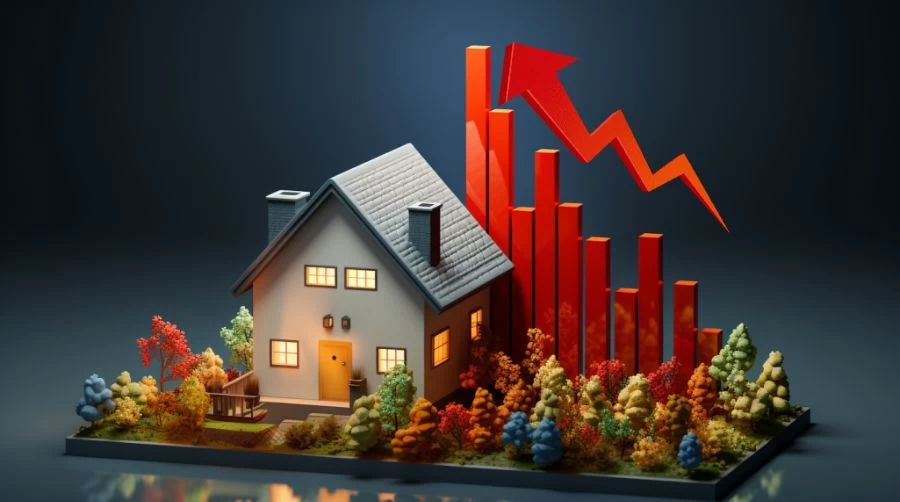
What's Causing The Mortgage Rate To Approach 8% After Almost Two Decades
Mortgage rates are approaching 8% after a long period because they closely follow the 10-year Treasury yield, which has risen due to strong economic data which surge in rates, not seen since 2000, is causing concerns in the housing market.
Published Oct 04, 2023 | Updated Oct 04, 2023 | 📖 3 min read
What's Causing The Mortgage Rate To Approach 8% After Almost Two Decades
In recent times, mortgage rates have surged, nearing the 8% mark. This is a significant increase compared to the 6% rate seen at the beginning of the year. The surge has raised concerns in the housing market, impacting both new and existing home sales.
Mortgage rates tend to follow the yield on the 10-year Treasury, and this increase is due to the rise in Treasury yields. Strong economic data has played a role in boosting these yields. Not since the end of 2000 have rates been this high, creating uncertainty in the real estate market.
These rates are influenced by various factors, including economic conditions, inflation, central bank policies, and the overall health of the housing market. When rates are low, it's generally a good time for potential homebuyers to secure a mortgage because it means you can borrow money at a lower cost.
Conversely, when rates are high, borrowing becomes more expensive, and this can impact your ability to afford a home or determine whether refinancing an existing mortgage makes financial sense. So, mortgage interest rates play a crucial role in determining the overall affordability and cost of homeownership
What is the Impact of Rising Mortgage Rate?
The impact of rising mortgage rates on the housing market and homeowners is a topic of significant concern and interest. As interest rates for home loans increase, they can have far-reaching effects on various aspects of the real estate landscape, including housing affordability, homebuyer behavior, and the overall economy.
Impact on HomeBuyers
Higher mortgage rates have made homes less affordable for potential buyers. For instance, a borrower purchasing a $400,000 home with a 20% down payment on a 30-year fixed loan now faces a monthly payment approximately $930 higher than it was when rates were at 3% during the height of the Covid-19 pandemic.
While the Federal Reserve recently chose not to raise interest rates, it left the possibility of another hike this year and fewer expected cuts next year. The decisions are closely tied to economic data, and the stronger data in early October has contributed to the rising yields.
Impact on Builders
Builders initially benefited from the tight supply of existing homes for sale, but higher mortgage rates have become a concern. Builder sentiment dipped into negative territory in September for the first time in five months, signaling challenges in the housing market.
The surge in mortgage rates to nearly 8% is a significant development in the real estate landscape. It's driven by rising Treasury yields and stronger economic data, impacting affordability for potential homebuyers and posing challenges for builders. The future trajectory of these rates will be closely monitored, as it plays a vital role in the housing market's health and stability
MarketsHost, your trusted online marketplace for all Mortgage-related things. Whether you're a first-time homebuyer or refinancing, we've got you covered.
What's Causing The Mortgage Rate To Approach 8% After Almost Two Decades - FAQs
1. Why are mortgage rates approaching 8%?
Mortgage rates are rising due to an increase in Treasury yields and strong economic data.
2. When was the last time mortgage rates were this high?
Mortgage rates haven't been this high since the end of 2000.
3. How have higher mortgage rates affected the housing market?
Higher rates have reduced affordability, impacting both new and existing home sales.
4. What role does the Federal Reserve play in mortgage rates?
The Federal Reserve's decisions on interest rates and economic outlook influence mortgage rates.
5. How much has the increase in rates affected homebuyers?
For example, a $400,000 home with a 20% down payment on a 30-year fixed loan now costs around $930 more per month than when rates were at 3% during the pandemic.




